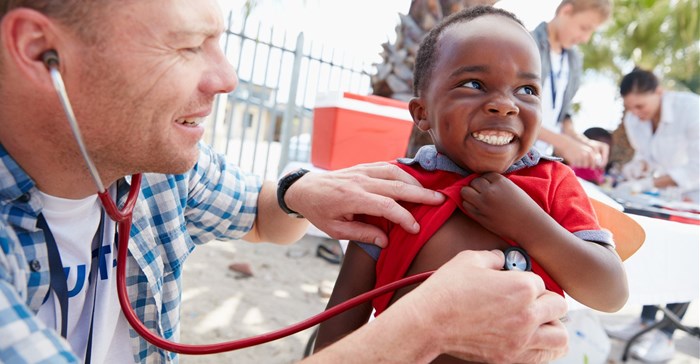Marketing & Media trends
Industry trends
BizTrends Sponsors
6 ways to speed up the UN's health SDGs in Africa

This is largely because health gaps continue to exist in remote and hard-to-reach locations, and also because new and emerging challenges require pioneering thinking and solutions.
In line with this, and as part of a report that I co-authored with colleagues from BCG, we identified six main approaches that the global health community – and low- and middle-income countries, in particular – can use to accelerate progress on achieving the UN’s health SDGs:
- Embrace precision global health The rise of data and advanced analytics are leading to the uptake of precision global health to ensure that health interventions and facilities are focused on areas with the highest burden of disease and targeted at the communities and individuals that need it the most.
- Improve performance management Putting in place a robust performance management system allows users to collect and analyse vital metrics on operations and outcomes. The results are already speaking for themselves. Efficiency increased by at least 20 to 30% in low- and middle-income countries that have implemented these systems,
- Harness the private sector The private sector currently delivers between 30 and 60% of health services in low- and middle-income countries, and is often the first point-of-care.
- Increase global health financing and maximise existing resources The annual growth rate of health development assistance was 11.3% between 2000 and 2009, but that shrunk to only 1.2% between 2010 and 2015 and has stayed stagnant. This indicates that there is a need for a mix of approaches and funding mechanisms, including experimenting with results-based financing, leveraging greater flows of private capital and blended capital, and increasing domestic health spending in low- and middle-income countries.
- Launch and scale innovative solutions The ability to scale interventions has already been proven to bring significant benefits.
- Pursue next-generation R&D This includes pioneering clinical trial designs such as adaptive trials or biomarker-led designs to shorten drug development time.
Efforts to combat malaria in the last 20 years, for example, have been hampered by a lack of precision – solutions like nets, and prophylactic and other treatment products were distributed in the same amounts even where incidence differed greatly.
That is starting to change: Tanzania’s National Malaria Control Programme has prevention and intervention packages customised for different sub-regions according to five levels of risk, and specifically targeting hotspots. This kind of focused approach will yield results.
Top-performing health facilities in Kenya, for instance, have seen concrete improvements in cost efficiencies, better health outcomes in terms of case detection rates and patient adherence, and even improved patient satisfaction because of performance management techniques to retain staff through incentives and the timely payment of salaries. This makes it clear that performance management has the power to make a tangible difference.
However, the global health community has typically ignored the private sector’s role in delivering healthcare. The World Health Organisation only tracks 14 health delivery indicators in the private sector, compared to 42 in the public sector. This illustrates that there is a gap to be filled, and it will be important to build strategic partnerships to leverage the private sector’s capabilities and capacities to drive access to quality care. A prime example is the provision of HIV services and treatment in South Africa, where the public sector is drastically short-staffed. The private sector, on the other hand, has sufficient capacity so it will be necessary to increase collaboration between the sectors to provide greater numbers of patients with HIV treatment.
Results-based financing is gaining traction in high-income countries, predominantly for education and justice reform initiatives, and although they are under-utilised in low- and middle-income countries, the introduction of examples like malaria elimination bonds by the Bill &Melinda Gates Foundation, the Carlos Slim Foundation and the Inter-American Development Bank show that this type of financing has the potential to make a positive impact.
Increasing private and blended capital flows, as well as domestic health spending has also been shown to be effective. Eight East African countries, for example, have seen lower infant mortality and improved life expectancy where they increased health expenditure.
Vaccines are just one example of this, with the introduction of the meningococcal vaccine helping protect over 300-million people in sub-Saharan Africa between 2010 and 2018. There are, of course, challenges with scaling system-dependent, time-sensitive and logistically complex interventions, but tapping into the private sector’s knowledge and resources can help launch and scale products more seamlessly going forward.
The Examine trial, for instance, used adaptive design to compare an anti-hyperglycaemic drug with the standard of care in reducing cardiovascular episodes in patients with type 2 diabetes. An interim analysis meant investigators could discontinue the trial and save both time and money when they saw it wasn’t working. This shows that adaptive trials have the potential to save resources and time in drug development and trials in low- and middle-income countries
Taking these steps has the potential to drive real and positive change and help achieve global health outcomes that will translate into accelerating progress on the UN’s sustainable development goals. Although there will undoubtedly be challenges in meeting these SDGs, these six areas present opportunities to make much-needed strides in improving healthcare globally.




